Work Folders Log on to Your Pc Again
The Remote Desktop Connection (RDC) feature of Windows allows you to remotely view and control remote Windows desktops. Sharing resources betwixt your local and remote PC can be tricky, but it is possible to share your local files and folders over a remote desktop session using RDC or other remote desktop tools like TightVNC.
If you're using RDC and want to access the files and folders on your PC when you lot're continued, you'll demand to configure your RDC setup. You can prepare this every fourth dimension you connect or, alternatively, create a Remote Desktop Protocol (RDP) shortcut file to save your settings.
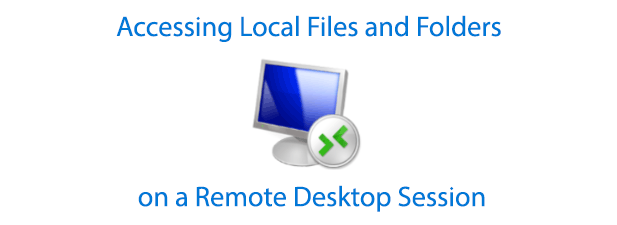
Accessing Local Files & Folders Over a Remote Desktop Connection
The Remote Desktop Connexion tool uses Microsoft'due south Remote Desktop Protocol to create a remote desktop session to Windows PCs and servers. It's included with all editions of Windows 10 and Windows Server.
Microsoft also offers RDP-capable software to allow y'all to connect to Windows PCs on Mac, equally well as on mobile platforms like Android and iOS. If you're on a Mac, you lot can share your Mac files and folders to Windows in the Redirection tab of the Remote Desktop app.
On Windows, the born Remote Desktop Connection tool allows you lot to configure your file and folder sharing settings before you connect.
- To start, open up the Remote Desktop Connection tool. You can observe this in your Windows Start menu nether the Windows Accessories binder, or by clicking Win + R to open the Windows Run dialog box, then typing mstsc and clicking OK to open up it.

The Remote Desktop Connection tool, when first launched, is pretty basic. Normally, you would insert the IP accost for your remote PC and click connect, but y'all'll demand to configure things farther earlier yous connect if you want to access your local files and folders.
- In the Remote Desktop Connection window, click Testify Options.
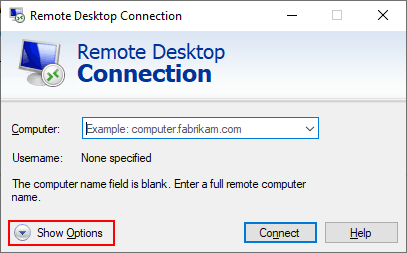
- This volition display the configuration options for RDC. Click the Local Resources tab to access the sharing settings for your remote desktop session. Click More at the bottom, under the Local devices and resources section.
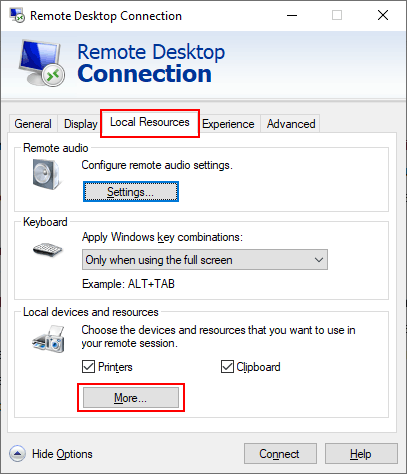
- In the Local devices and resources box, you lot can set RDC to share certain devices with your remote PC. To share your local files and folders, click the + pointer side by side to Drives to aggrandize that section.
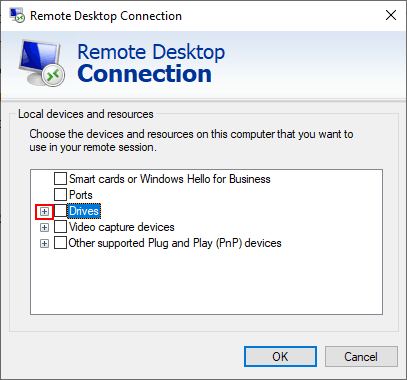
- In the Drives section, you can share your available Windows drives, any attached optical drives like a CD or DVD drive, too as portable storage like flash drives that you lot might decide to connect later. Click any of the checkboxes to share that storage with your remote PC, then click OK.
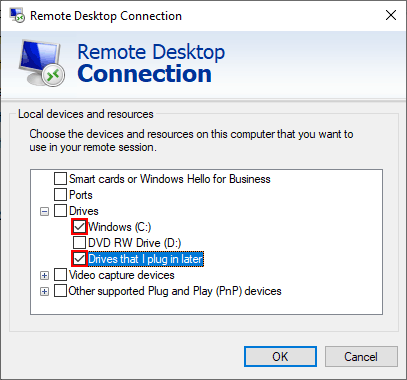
- With your drive sharing settings in place, return to the General tab and type your remote PC or server IP address in the Computer box under the Log-on Settings department. Click Connect to make the connection.

- One time connected to your remote desktop, open Windows File Explorer. You can do this by right-clicking your Start menu button and clicking File Explorer. In File Explorer, y'all should see your shared drives listed under the Redirected drives and folders department.
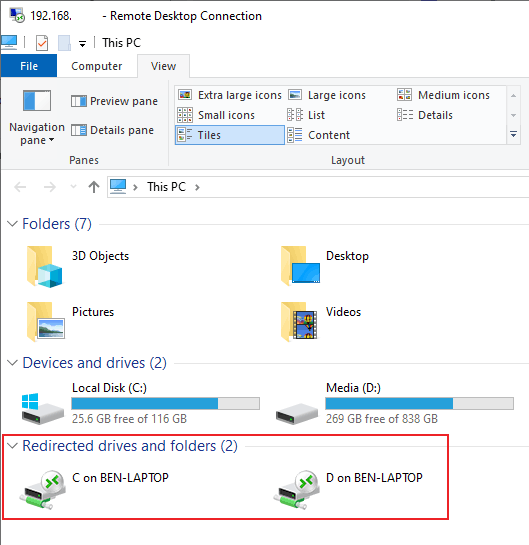
These settings may merely last for the duration of your connection to your remote desktop. To save these settings, you'll demand to salvage your connectedness equally a shortcut using an RDP settings file.
Saving RDC Settings With An RDP Shortcut File
Remote Desktop Protocol settings files are designed to be interchangeable with other software that allows RDP connections.
- If yous want to salvage your connection settings for easier access or to use information technology on another device, click Bear witness Options in the Remote Desktop Connection tool.
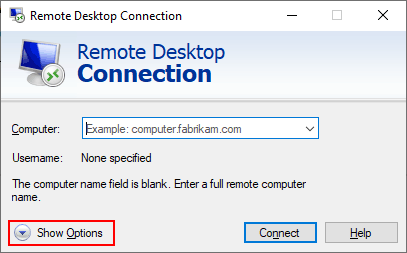
- Cheque all of your connection settings are right, and then under the Connectedness settings department of the General tab, click Save Equally.
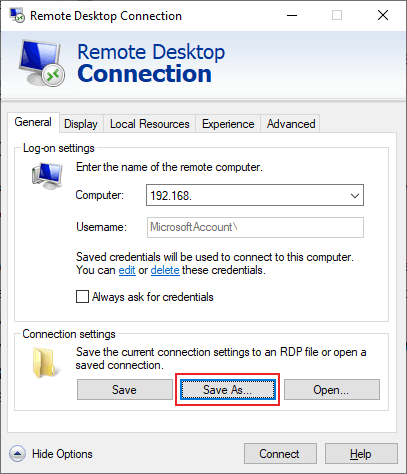
- In the save file box that appears, give your connection file a suitable proper noun, and so click Save.
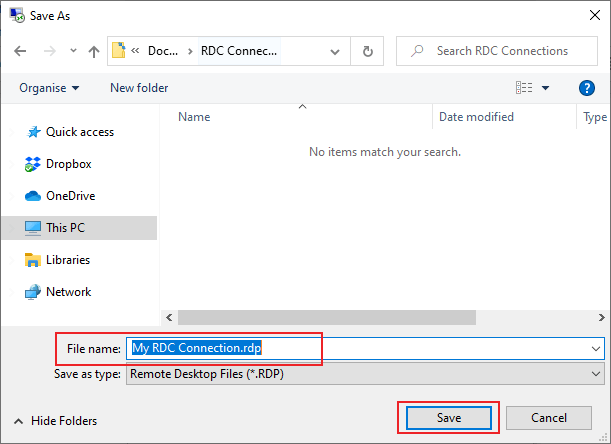
In one case your RDP file is saved, yous can then use information technology to directly connect to your remote desktop in future. Double-clicking on the file to open up it will launch the RDC tool and automatically connect with your predetermined settings applied.
Y'all can also access the file from inside the Remote Desktop Connection tool by clicking Open under the Connection settings section.
If, at any bespeak, you wish to change these settings, then follow the instructions above to overwrite the saved RDP file.
Sharing Files & Folders Over VNC
While Windows comes with the RDC tool, you lot can use other, third-party remote desktop connectedness software to connect to Windows and other operating systems. VNC is one of the more popular culling protocols to RDP, with various connectedness clients y'all can use.
I of the most popular VNC server-client software combinations is RealVNC, simply this just supports file transfers with a professional or enterprise subscription. A practiced, free alternative for Windows users is TightVNC, which does allow for file transfers.
You lot'll demand a VNC server installed on your remote desktop to be able to do this. Installing TightVNC more often than not installs both the server and the viewer components, unless yous customize this during the setup procedure.
- If your remote VNC server is ready, download and install TightVNC on your local PC. Once installed, open the TightVNC Viewer and connect to your remote desktop by typing your IP address into the Remote Host box, so clicking Connect.
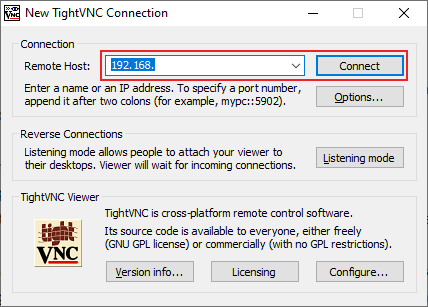
- Once connected, click the Transfer files icon in your TightVNC menu bar.
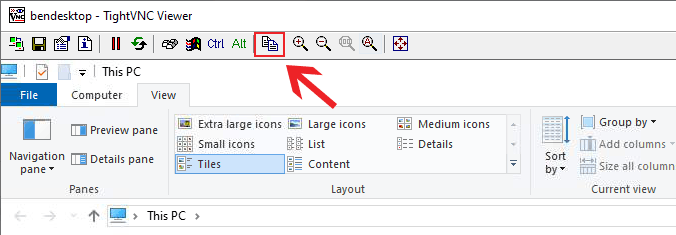
- In the TightVNC File Transfer window, select the files and folders you want to move from A to B (from your local PC to your remote PC, or vice versa). Click the >> or << buttons to brainstorm the transfer. Click Yes to ostend that you want the transfer to brainstorm.

Once yous concur to brainstorm the transfer, the files and folders you've selected will brainstorm copying across. If you desire to abolish the transfer, click the Cancel button at the bottom of the window.
If you'd rather utilise some other customer, you tin can use file transfer software like WinSCP to move files between your local and remote Windows PCs instead.
Exercise not share my Personal Information.
Source: https://helpdeskgeek.com/networking/accessing-local-files-and-folders-on-remote-desktop-session/
Post a Comment for "Work Folders Log on to Your Pc Again"